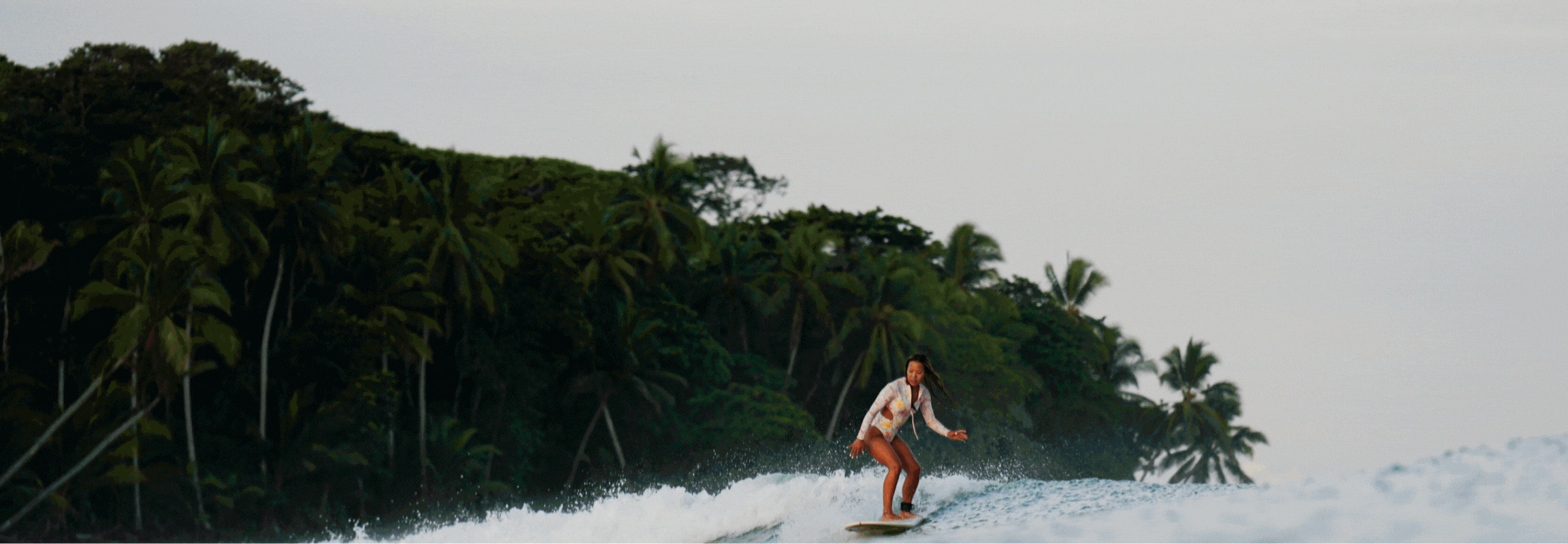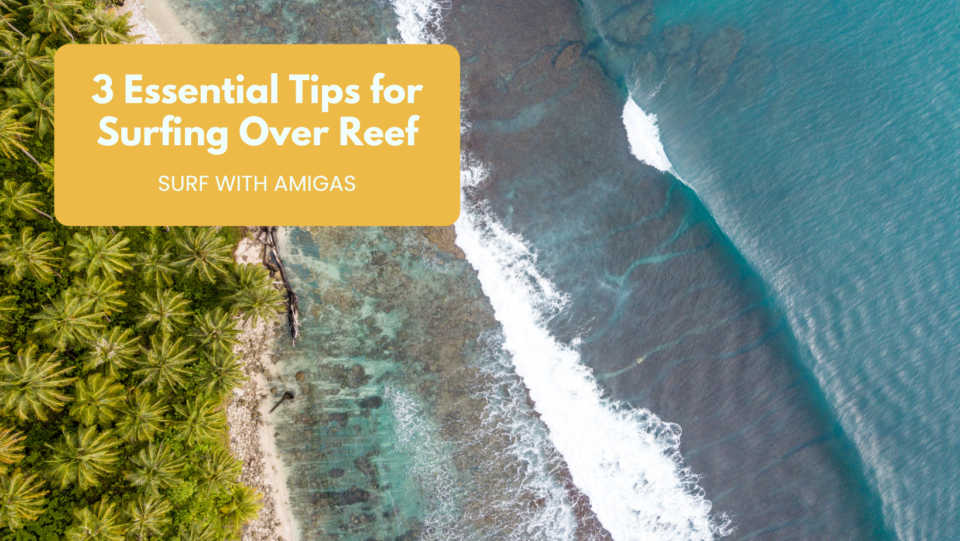Surfing over a reef can offer some of the most thrilling and picturesque experiences in the ocean. Our retreat locations in both Indonesia and the Maldives are renowned for their incredible reef breaks, attracting surfers from around the globe. However, surfing over reefs also comes with its unique set of challenges and risks, not to mention intimidation factor! Here are three essential tips to help you navigate these stunning but potentially hazardous spots safely and with confidence.
1. get to Know the Breaks
Understanding the specifics of the break you’re heading to is crucial. Every break has its own characteristics and potentially problematic zones. For this reason alone, local knowledge is invaluable. Once you arrive at your destination, talk to local surfers or guides to learn about the best tides, swell directions, and any specific dangers such as sharp coral heads or strong currents so you can be well equipped when you paddle out.
Most importantly, research the destination and surf breaks you’ll be going to before arrival. Watch videos, check out swell forecasts, and look at wave guides or other resources on websites like Surfline. Understanding the conditions you may be dealing with in advance will better help you prepare, both mentally and physically!
Pro Tip: Utilize Local Knowledge
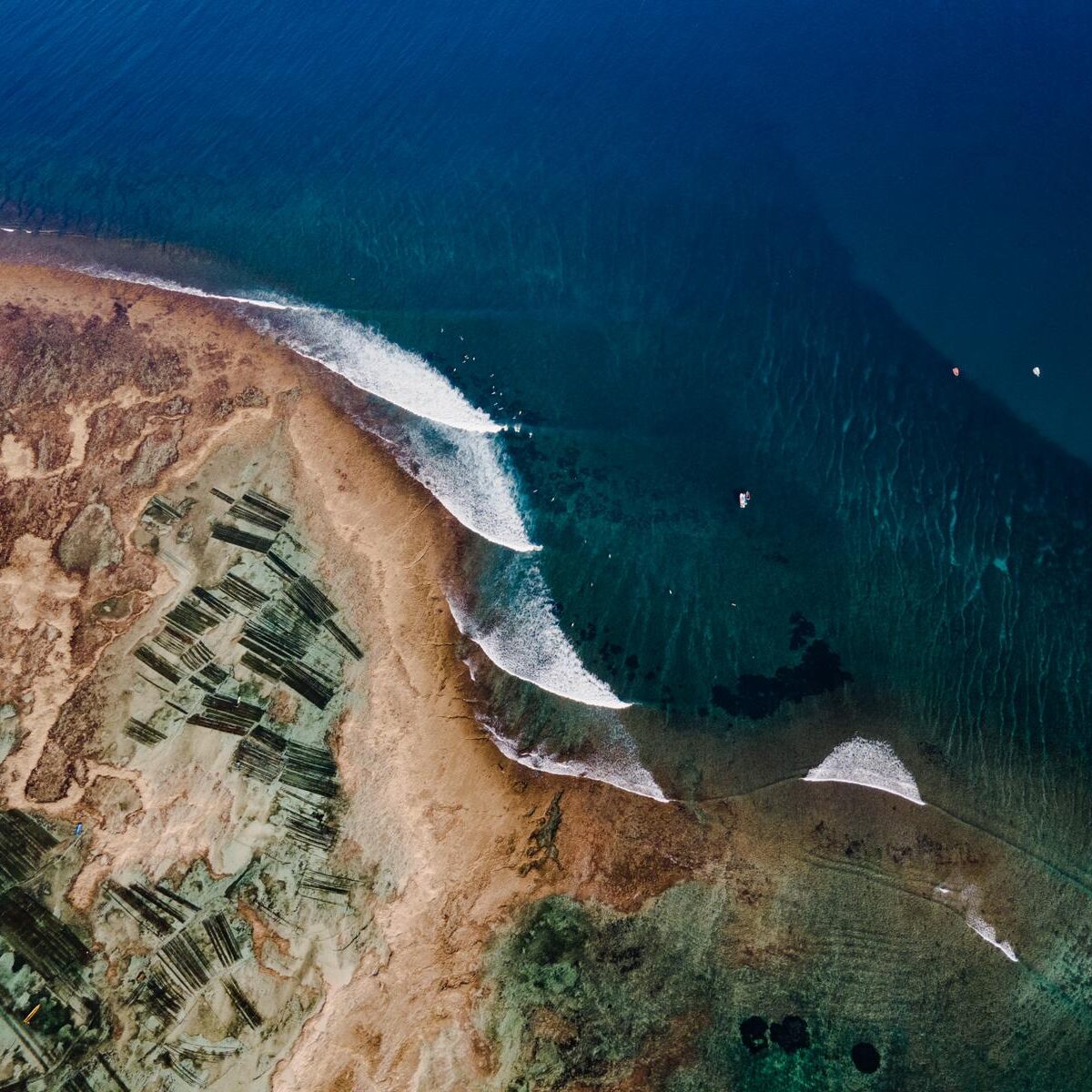
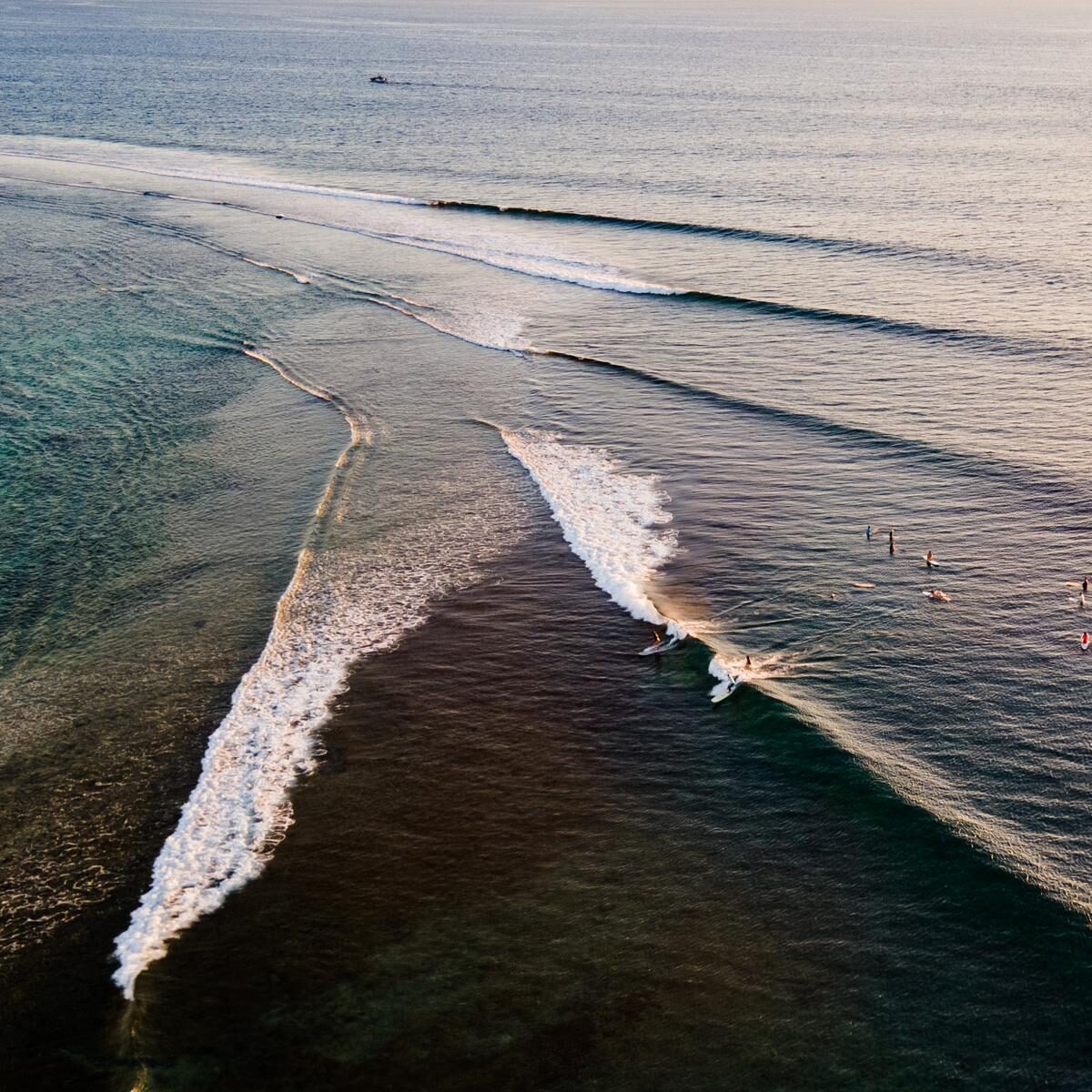
2. Equip Yourself Properly
Surfing over reefs may require some additional gear to ensure your safety, comfort, and confidence in the water! Everyone’s preferences are different, but you may want to invest in some gear listed below:
- Reef Booties: These can be extremely helpful in protecting your feet from sharp coral or rocks. If you have to walk over reef to paddle out to the break, they’ll also help provide better grip when walking over slippery, uneven surfaces. Not to mention, if you do find yourself with a few party favors from the reef on your feet, booties will help secure your bandages and provide more protection for your next session.
- Rash Guards and Wetsuits: Rash guards and neoprene will not only protect you from the sun but can also soften any blows you might have with the reef!
- Surf Helmet: You might not wear a helmet every time you paddle out, but if you’re looking to get some tube time or take off steep and deep in powerful, hollow waves over shallow reef, it may be something you want to look into. Not to mention with tropical surf locations becoming more crowded, protecting yourself from potential collisions with other surfers might not be a bad idea, either.
Finally make sure all of your surf gear (especially things attached to your surfboard) are in good working order before your departure! Using damaged or well-loved items (like leashes!) in critical conditions can quickly turn a minor mishap into a dangerous situation on a reef break, where you need to stay close to your board to avoid injury.
Pro Tip: Use a Strong, High Quality Leash

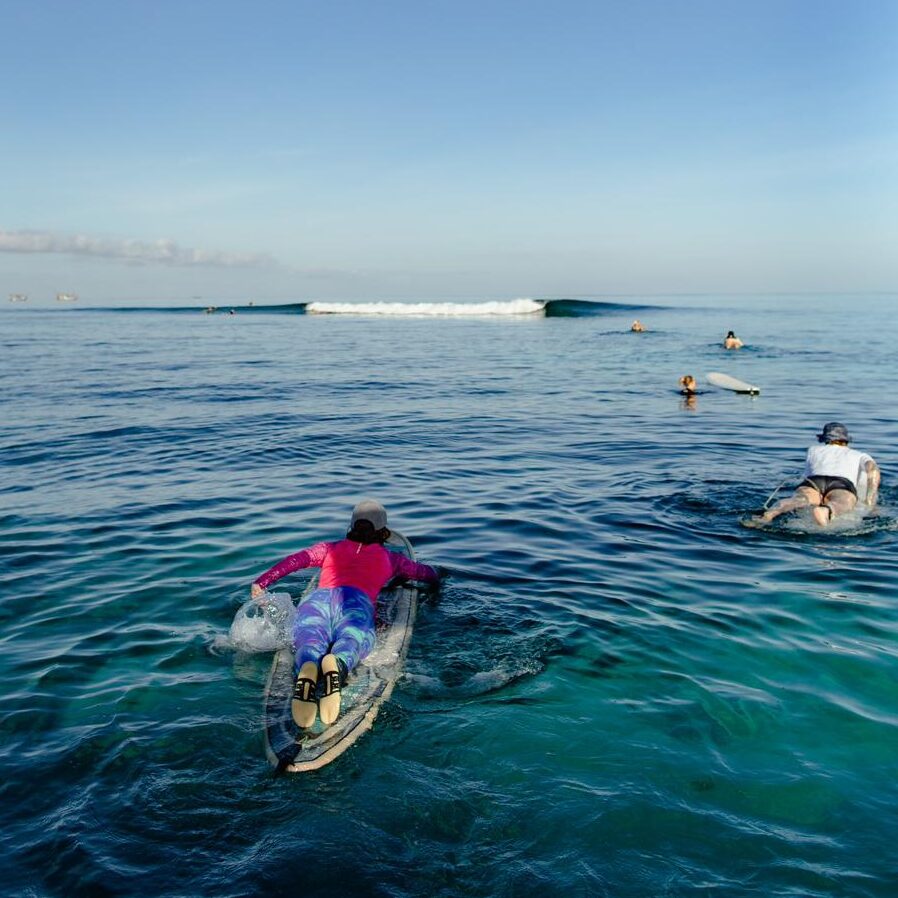
3. Perfect Your Technique
Paddle and Positioning
Reef breaks often require precise positioning and strong paddling skills to ensure you catch the wave at the right spot and avoid being caught inside.
- Take-Off Points: Learn the take-off points specific to each reef break. This is where local knowledge is again invaluable. Being in the right position can mean the difference between a thrilling ride and a dangerous wipeout.
- Paddle Power: Reefs often create powerful, fast-breaking waves. Ensure your paddling technique is strong and efficient. Practice quick, explosive paddling to get into the wave early and establish control.
Still wondering how to really “read” the waves? Check out this video!
Wave Selection and Exit Strategy
Choosing the right wave is critical, especially over a shallow reef.
- Wave Selection: Avoid waves that are too big for your skill level. Start with smaller, more manageable waves and gradually work your way up as you gain confidence and experience.
- Exit Strategy: Always have a plan for how to safely exit the wave. Know the safest routes back to the lineup or to shore. If you do wipe out, protect your head with your arms and try to fall flat to distribute the impact.
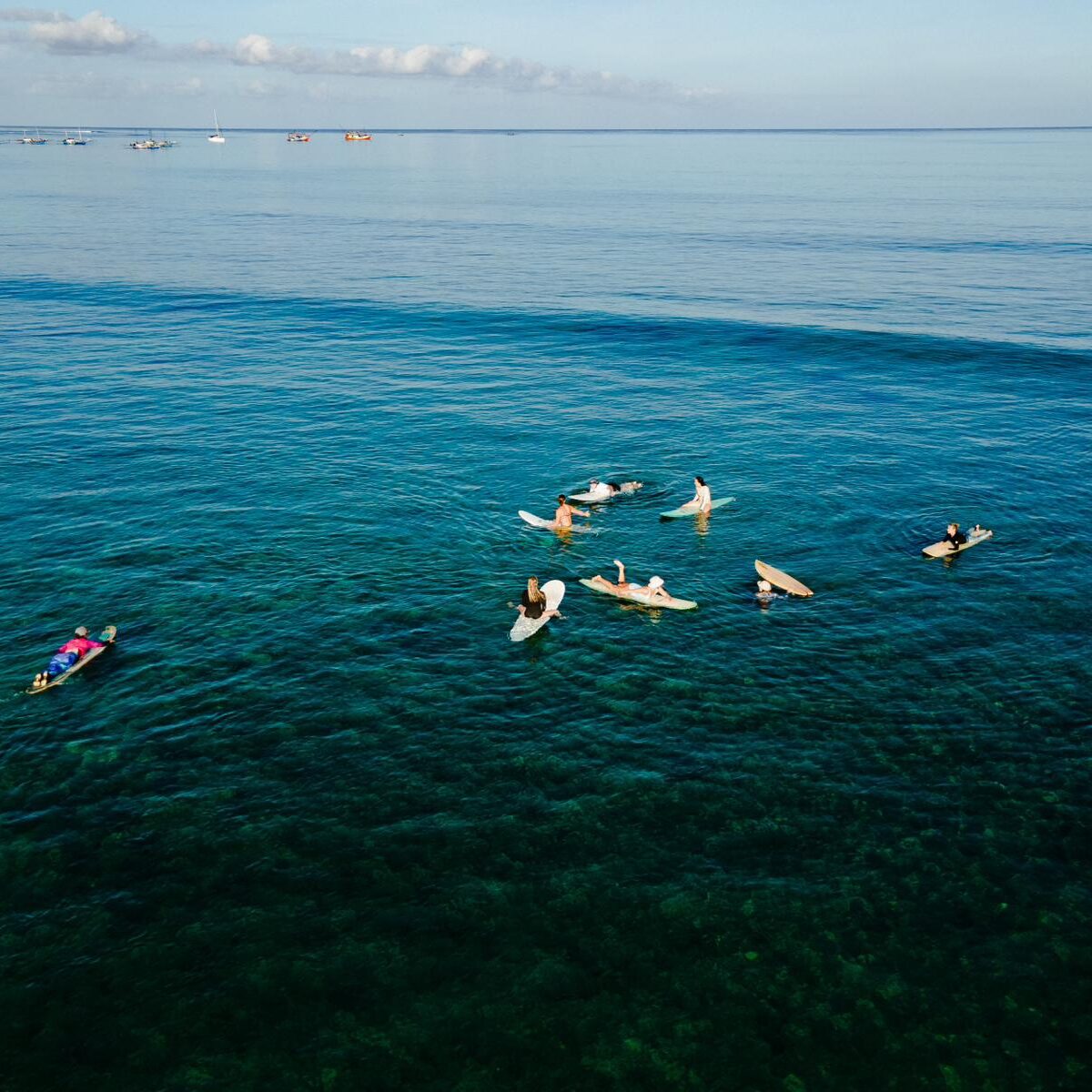
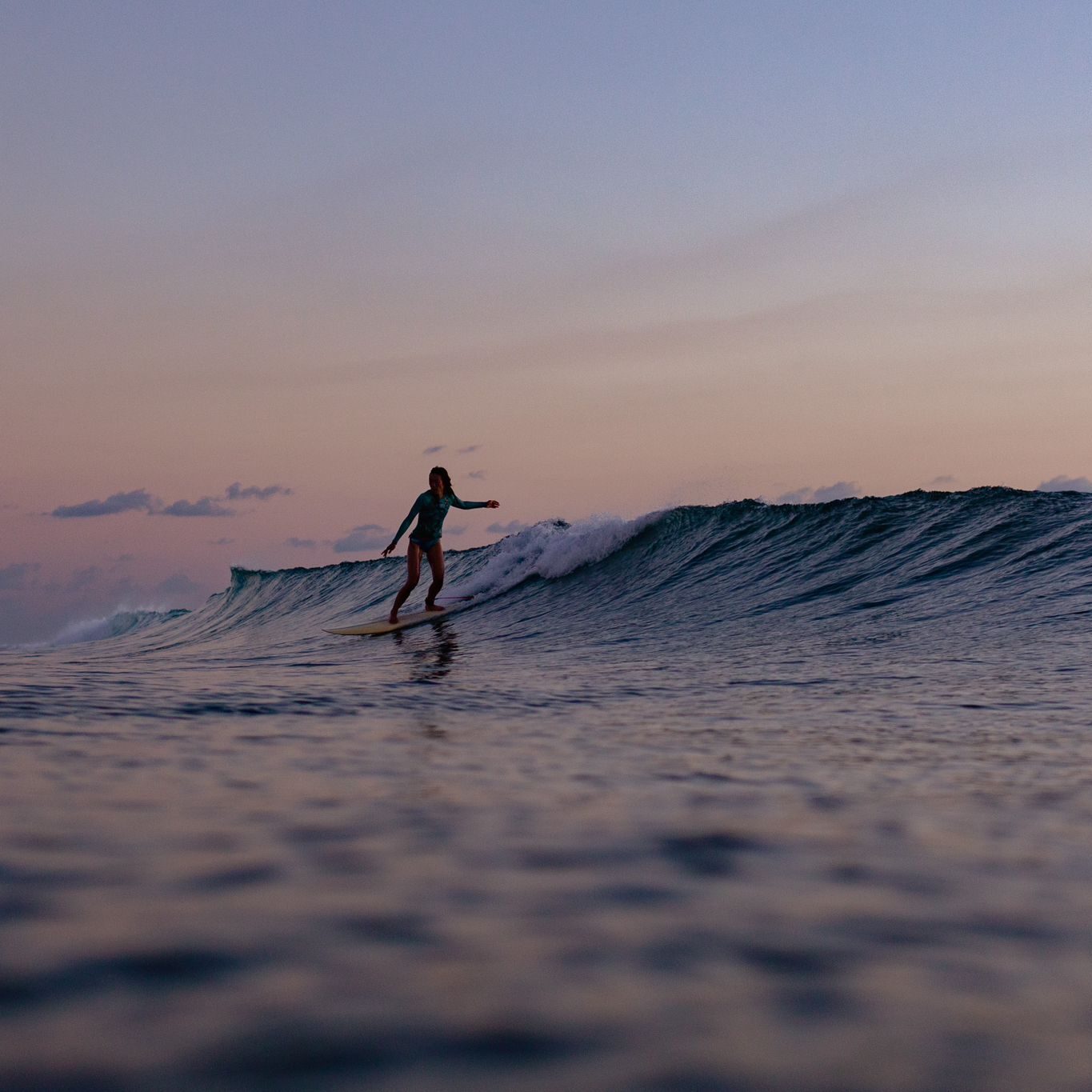
Pro Tip: Practice Duck Diving (DEEP!) & Don’t Hesitate on The Takeoff
Being proficient at duck diving (pushing your board under an oncoming wave) can help you navigate the sometimes-treacherous waters above a reef. On a steep, powerful wave, hesitating on the takeoff can lead to a potentially dangerous situation (likely getting hung on the lip and going over the falls). Remember to commit! Even if you fall, you’ll be in a safer position on the wave than at the top.
Surfing over reefs in destinations like Indonesia and the Maldives can offer some of the most memorable sessions of your life. Although the first time surfing a reef break might be intimidating, trust yourself and remember to have fun! Often times when we’re nervous we tense up or forget to breathe in stressful situations, which can have negative impacts on our surfing and safety! Breathe and have fun! Happy surfing!
